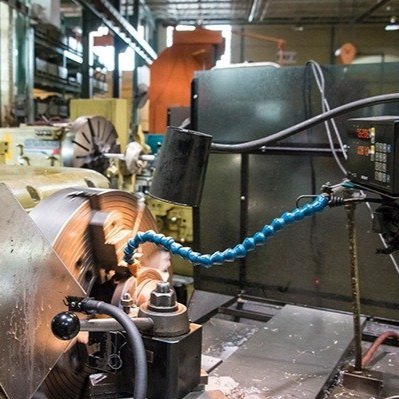Bionics Drive Factory Automation and Industry 4.0
/Festo’s Bionic Learning Network studies the movement and behavior of animals in nature to inspire interactive, intelligent technology and machines that stretch the boundaries of factory automation and lead the charge in building the factory of the future.
By Michelle Segrest, Reporting for Maintenance Technology Magazine
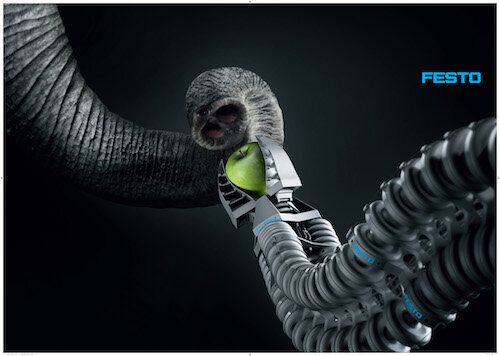
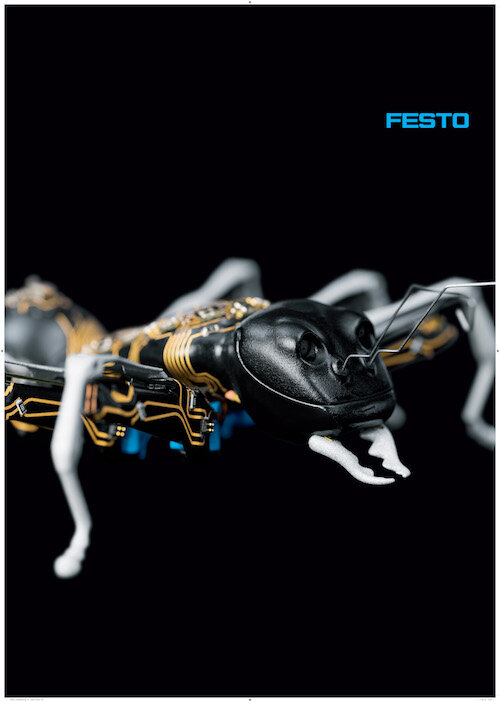
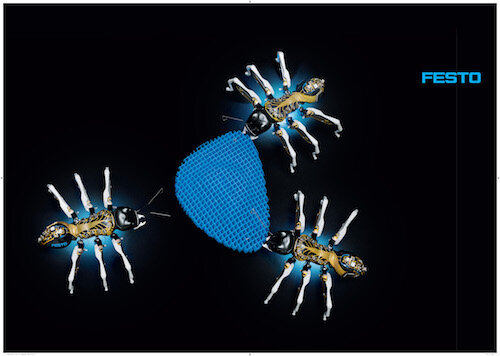
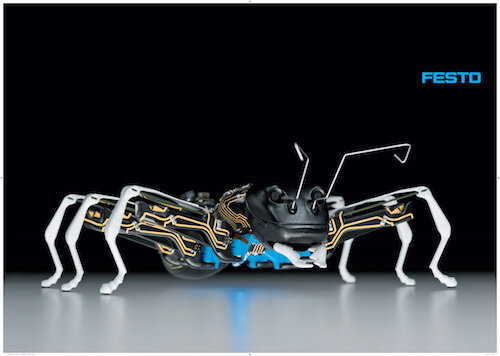
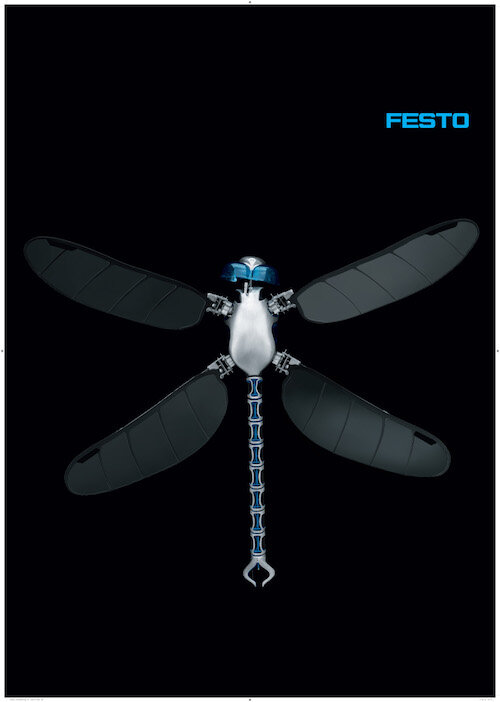

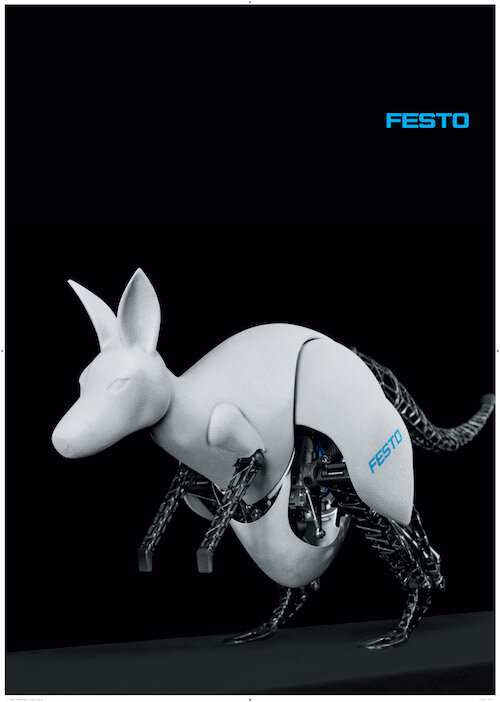
Walk through Festo’s headquarters in Esslingen, Germany, and you’ll witness what appears to be science fiction. Artificial intelligence and energy efficiency are deeply embedded into its bionic robots.
The engineers at Festo believe that by turning to nature to study the behavior, movement, and communication techniques of mammals, insects, and reptiles, you can build a smarter factory with advanced automation. In fact, you can build the factory of the future.
“The concept of the Bionic Learning Network [BLN] is to incorporate best practices of nature into future technology, with a focus on energy efficiency, artificial intelligence, machine learning, and machine-to-human collaboration,” said Yannick Schilly, Festo’s head of product supply NAFTA and vice president of operations of Festo’s Regional Service Center in Mason, Ohio. “Replicating animals into bionic robots allows us to learn from nature and to apply these best practices into motion and control technology.”
For example, Festo created BionicANTs that transfer the delicate anatomy of actual creatures, combined with their cooperative behavior, to the world of technology. Like their natural role models, these robots communicate with each other and work together according to clear rules to solve a common task. To translate this into our future innovations, we believe that collaboration between components and machines, as well as between machines and humans, is an important element of the factory of the future,” Schilly said.
The Bionic Handling Assistant offers an alternative to conventional robots, which move linearly—only up and down and side to side. Replicating an elephant’s trunk, this robot is lightweight, energy efficient, flexible, and capable of 360-degree motion. The flexible fin gripper at the end of the trunk is able to grab a tomato without bruising it. Its adaptive fingers adjust flexibly to any object being gripped, enabling fragile and irregularly shaped objects to be handled safely for the first time in a factory environment.
Since the early 1990s, the company has been creating bionic prototypes that translate interesting principles of nature to the world of engineering. The launch of the Bionic Learning Network in 2006 began the dynamic and open exchange of ideas with well-known universities, institutes, and development companies. Each biomechatronic prototype brings together new ideas, solutions, and technologies.
“Nature has been developing best practices over millions of years, and we believe that building cross-functional bridges between science, biology, and engineering offers new possibilities for future innovation,” Schilly stated.
Industrial Internet of Things—Industry 4.0
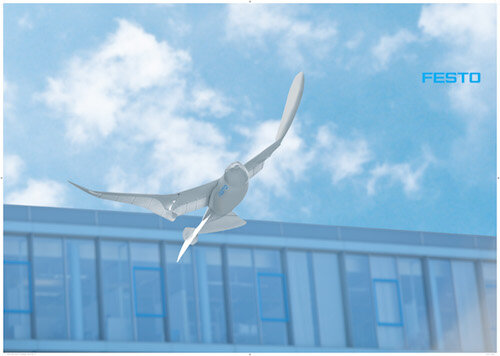

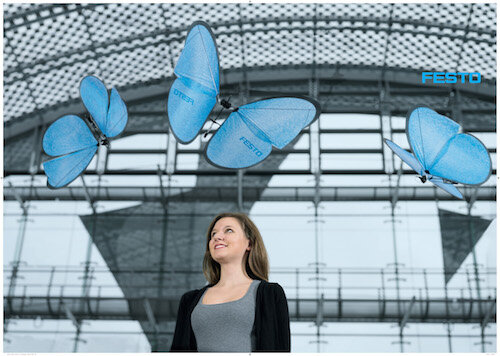
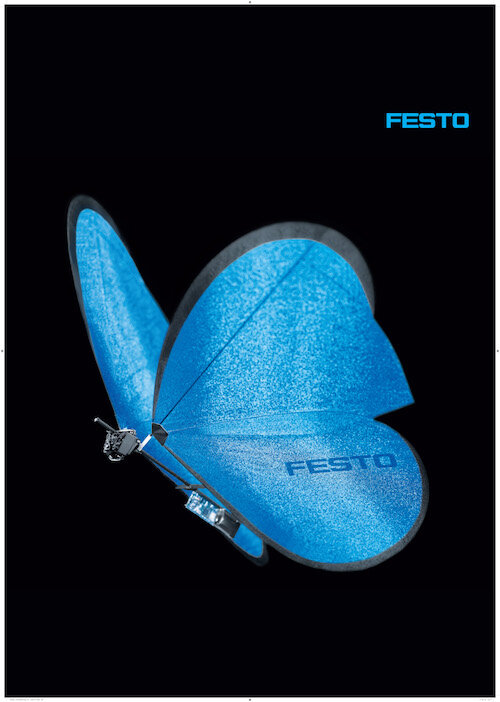
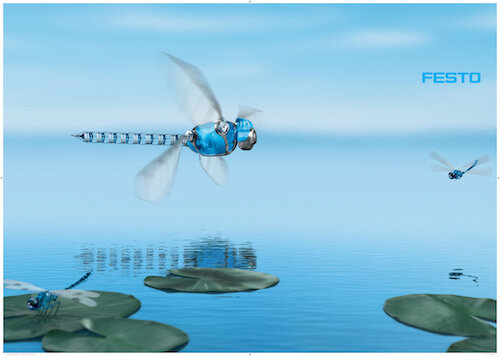

Also known as the Industrial Internet of Things (IIoT), Industry 4.0 incorporates machine learning and data technology, machine-to-machine (M2M) communication, and conventional automation technologies. Intelligent technology is at the forefront of Festo’s research and development efforts.
As Schilly points out, factories will change dramatically in the future. Production capabilities, needed to meet growing population demands—for cars, devices, smart phones, etc.—will call for many more factories and capital investments. “Of course, the investors want to operate as productively as possible. We develop the products and technologies for factories and process automation of the future that will increase productivity and drive this transformation,” he added.
Understanding the need for intelligent technology, the company finds unique sources of inspiration.
“Every year we study another group of animals, depending on the important topics driving our business,” Schilly said. “If we are thinking about communication and collaboration, what can we learn from ants? If we are exploring mobility and loading stations, what can we learn from jellyfish? If we want to develop a gripper system, what can we learn from chameleons and how their tongues reach out and grab something with a delicate-but-sticky substance? Or we may explore how the gecko is capable of climbing walls vertically. How are its feet constructed, and what can we learn from vacuum systems and how to translate this to automation?”
Industry 4.0 is where Festo is well positioned to help factories become smarter by using machines that communicate with other machines and providing more data to control and operate the factory, which, in effect, optimizes time and cost. “We are talking about levels of artificial intelligence that we don’t have today,” Schilly explained. “We know how connected people are on social media, and we will see the same thing happening in the near future with devices. All of that needs to be supported with automation. Conventional technology plus artificial intelligence plus communication plus networking capabilities—that is our understanding of what Industry 4.0 means for the future.”
Biomechanitronics Drive Factories of the Future
With robots becoming more prevalent in manufacturing and working more closely with humans, Festo invests considerable effort in the application of biological principles to the engineering world. Each year, a new animal prototype is introduced at the Hanover Messe Automation Fair in Hanover, Germany.
“They all have distinct functions,” Schilly said. “In the past, heavy-duty industrial robots were operated from a cage to protect workers from getting hurt. Today, we see robots working with and supporting the worker. Festo’s Bionic Handling Assistant can grip delicate objects like eggs or lightbulbs without destroying them and is capable of handing these objects to a person safely. Today’s robotic arms are equipped with sensors that are programmed to stop as soon as a person crosses its path. Safety is a key element in the factory of the future.”
Company engineers also study the motion and control of birds in flight.
“To make a bionic robot fly with the natural movement of the bird’s wing and tail and head, outdoors with wind and real natural conditions, is a real engineering innovation challenge,” Schilly said. “The Festo SmartBird flies purely by the flapping of its wings and without any additional drive mechanism, such as a propeller. This is truly remarkable and exactly what we want our R&D engineers to learn.”
In the case of the BionicANTs, their bodies are made of lightweight, innovative materials and considerable technology embedded in a small space to ensure vision, motion, and control. The purpose of this project was to explore communication processes and collaborative behavior in nature. Ants in animal form perfectly coordinate their activities with other ants, and these ant robots are also able to communicate with simple communication protocols. This is what is needed to learn for machine communication for the future.
Another example, the kangaroo, teaches engineers about energy efficiency. “The kangaroo is able to reuse the energy from its first jump. Upon landing, it preserves and reuses 80% of the energy from the previous jump,” Schilly explained. “What a great role model when it comes to energy efficiency and portable energy.”
Studies such as these have helped the company revolutionize the conventional valve terminal, which it invented many years ago. The Festo Motion Terminal incorporates digital applications into one powerful and compact valve terminal that essentially replaces the need for fifty to hundreds of components.
The company’s online handling guide (OHG) is another good example of its customized, on-demand engineering applications and solutions. This tool allows configuration of a handling system within minutes by compiling information such as the weight of the objects that need to be moved, the size of the objects, the working space, and the desired operation speed. These specifications then go directly to the manufacturing shop and a complex handling system can be delivered in a matter of weeks.
Reliability and the Future of Factory Automation
Schilly explained that the company believes using automation and innovative applications will maximize production and keep costs down. This also requires that people be educated and trained to operate in the high-tech environment.
“The skill set required of our factory workers is very broad,” he said. “We think that, in the factory of the future, workers will be exposed to mechatronics and need to understand various disciplines, including mechanics, electronics, software, and IT. In collaboration with Sinclair Community College (in Dayton, Ohio), Festo created the first mechatronic apprenticeship program in the U.S., based on the successful German dual-education model. “Here we train our own apprentices, but also apprentices of other companies.”
At Festo’s Global Production Center in Esslingen, skilled workers learn how to use tools such as a smart glove. A worker wears the glove, and a device inside the glove records and communicates data so that the wearer doesn’t have to manually enter the information into a Computerized Maintenance Management System (CMMS). Among other things, the glove confirms that a part has arrived at its destination.
“The job profile of today’s factory worker is changing from performing simple, mundane, and repetitive tasks to complex decision making, monitoring, adaptive troubleshooting, and preventive maintenance,” Schilly said. “It is an advancement of qualification and skills and a much more enriching working environment for the factory operator of the future.”
With a skills gap in the U.S. resulting in thousands of well-paying jobs going unfilled each year, the company’s training arm, Festo Didactic, is instrumental in developing the workforce of the future to solve this problem. The company’s Regional Service Center in Mason, Ohio serves the North American automation market through advanced-assembly operations and logistics, using the innovation engine put in place through Festo Didactic and contributions from the BLN.
With Industry 4.0, there are many more integrated electronics that address direct communication with devices, Schilly stated. “We want to help our customers understand what the factory of the future looks like. In the past, a complete set of products was needed for mechanical and electrical functions. Now we can have just one solution with a lot of smart intelligence. And these solutions can come from a bionic electric footprint that takes us all the way back to nature.”
Curiosity Feeds Innovation
Whether Festo engineers seek to solve a specific problem or they observe an interesting phenomenon in nature, their curiosity and willingness to bridge science, biology, and engineering can translate into new innovations and applications in the industrial environment.
The company’s engineers focus on five specific areas:
Energy Efficiency: Combining lightweight construction with highly advanced technology.
Machine-to-Machine Communication: Finding ways for all components to communicate with one another at all times.
Machine Learning: Teaching machines to learn like a baby learns—by doing and performing functions.
Function Integration: Designing so all components perform many functions in one tiny space.
Machine-Human Collaboration and Safety: Developing machines that learn to collaborate with workers, including humans.
Michelle Segrest is president of Navigate Content, Inc. and has been a professional journalist for 30 years. She has covered the industrial processing industries since 2008 and specializes in technical articles and case studies that focus on technology and innovation connected with rotating equipment. She is the author of three books about modern manufacturing processes. Please contact Michelle at michelle@navigatecontent.com
Read these articles about Industry 4.0 Innovation
Tomorrow's Plant in Action Today
How Valves Can Help Drive the Factory of the Future
Biomechanitronics In Action
Follow these links to see videos of the Bionic Learning Network robots in action.
For more real-world stories of best practices from industry champions, be sure to check out my Modern Manufacturing eBook series
If you like this article about how Bionics Drive Factory Automation, please PIN IT!
Originally published in Maintenance Technology, September 2017 (Updated October 2019)
This page contains affiliate links. If you click on the product links and make a purchase, it allows me to make a small commission at no extra cost to you! Thank you for your support and I hope you find value in this content!





